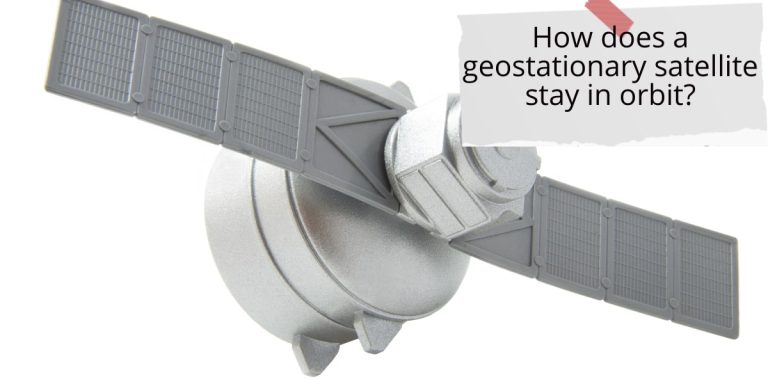How does a geostationary satellite stay in orbit?
What is a Geostationary Orbit?
A geostationary orbit is a specific type of orbit where a satellite matches the Earth’s rotation, allowing it to remain fixed relative to a point on the Earth’s surface. This stationary position makes geostationary satellites ideal for applications requiring continuous coverage of a specific area, such as telecommunications and weather monitoring.
The Mechanics of Stability
Gravitational Force
Gravity, the fundamental force that governs celestial mechanics, plays a central role in the stability of geostationary satellites. The Earth’s gravitational pull constantly attracts the satellite towards its center, exerting a force that would otherwise cause the satellite to fall towards the Earth.
Centrifugal Force
Counteracting the gravitational force is the centrifugal force generated by the satellite’s orbital motion. As the satellite travels along its circular path, it experiences an outward force due to its inertia, pushing it away from the Earth. This centrifugal force precisely balances the gravitational force, maintaining the satellite’s orbital stability.
Orbital Velocity
Achieving geostationary orbit requires the satellite to orbit the Earth at a specific velocity. Known as the orbital velocity, this speed ensures that the centrifugal force exactly matches the gravitational force, allowing the satellite to remain stationary relative to the Earth’s surface. The orbital velocity for a geostationary satellite is approximately 3.07 kilometers per second.
Factors Influencing Orbital Stability
Perturbations
Despite their apparent stability, geostationary satellites are subject to various perturbations that can disrupt their orbits over time. These perturbations include gravitational interactions with the Moon and Sun, solar radiation pressure, and atmospheric drag. While these factors may cause minor deviations from the ideal geostationary orbit, satellite operators employ corrective measures to maintain the satellite’s position.
Station-Keeping Maneuvers
To counteract the effects of perturbations and ensure long-term orbital stability, geostationary satellites undergo periodic station-keeping maneuvers. During these maneuvers, the satellite’s onboard thrusters are fired to adjust its velocity and altitude, compensating for any drift from its designated position. By meticulously monitoring the satellite’s trajectory and making precise adjustments, operators can prolong the satellite’s operational lifespan and optimize its performance.
Real-World Applications
Communication Satellites
Geostationary satellites serve as the backbone of global communication networks, facilitating television broadcasting, internet connectivity, telephony, and data transmission. Companies such as Intelsat, SES, and Eutelsat operate fleets of geostationary communication satellites, providing seamless connectivity to millions of users worldwide.
Weather Monitoring
Weather satellites stationed in geostationary orbit play a vital role in monitoring weather patterns, tracking storms, and collecting meteorological data. Examples include the GOES (Geostationary Operational Environmental Satellites) series operated by the National Oceanic and Atmospheric Administration (NOAA), which provide real-time imagery and data for weather forecasting and disaster management.
Fun Facts about Geostationary Satellites
- The concept of geostationary satellites was first proposed by science fiction writer Arthur C. Clarke in 1945.
- The altitude of geostationary orbit, approximately 35,786 kilometers, is more than 22,000 miles above the Earth’s surface.
- Geostationary satellites appear stationary from the ground but are actually traveling at incredible speeds, orbiting the Earth once every 24 hours.
Conclusion: How does a geostationary satellite stay in orbit?
Geostationary satellites epitomize humanity’s quest to conquer the final frontier, harnessing the principles of celestial mechanics to defy gravity and maintain their stable orbits above the Earth. Through a delicate balance of gravitational and centrifugal forces, coupled with precise orbital velocity, these satellites provide essential services that have become integral to our daily lives. As we continue to unlock the mysteries of space and push the boundaries of technology, geostationary satellites will remain beacons of connectivity, innovation, and exploration in the boundless expanse of the cosmos.

